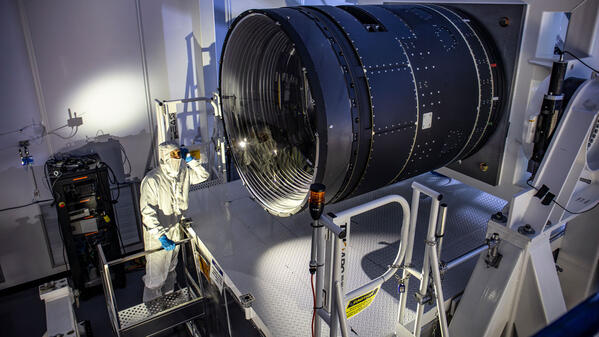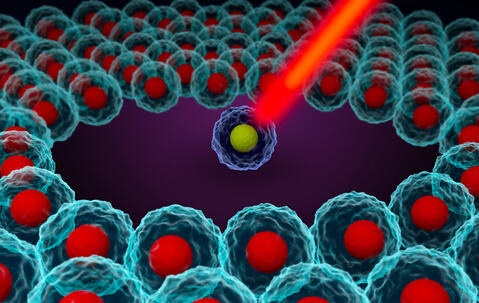For the past 20 years, this specialist in developmental and evolutionary biology has been passionately dedicated to studying a small fish that lives in the waters of Central America. So much so that she took up speleology in order to explore deep caves in Mexico, where she can observe it in its...
Article
07.23.2024
Haunted houses, ghosts, spirits… From Mongolia to the United Kingdom, the anthropologist Grégory Delaplace investigates the various ways in which the dead manifest themselves to the living. He takes these “apparitions” seriously, refusing to prejudge whether...
Article
07.22.2024
It took hundreds of scientists worldwide, including several CNRS teams, to produce the world’s largest digital camera, the LSST (Legacy Survey of Space and Time), which has finally arrived in Chile. Mounted on the telescope at the Vera C. Rubin Observatory,...
Slideshow
07.12.2024
Our topics
Article
06.27.2024
On 22 June, a Chinese Long March 2C rocket launched the SVOM satellite, carrying two French-designed instruments, into orbit. The mission's goals are to investigate the mechanism of gamma-ray...
06.24.2024
As the European elections draw near, Paul Bouchaud, a specialist in algorithms, shows that Meta (the company that owns Facebook, Instagram, and WhatsApp) is not preventing pro-Russian propaganda from...
Article
06.20.2024
Alessandro Morbidelli is a specialist in the evolution and formation of planetary systems, and holds the planetary formation Chair at the Collège de France. The astrophysicist looks back on his...
06.14.2024
The “Sanctuary on the Moon” project, launched nearly ten years ago, aims to send a collection of discs containing a vast body of knowledge and material evidence of human civilisation to the Moon.
Article
06.10.2024
Solving a long-standing mystery, the sarcophagus of Ramses II has finally been identified based on a piece of granite discovered in Abydos, Egypt… in 2009. Recent analyses of the enigmatic fragment...
Article
06.06.2024
As the Allies commemorate the 80th anniversary of D-Day, the CNRS historian Denis Peschanski takes a look behind the scenes and celebrates the vital yet long-neglected role of women and foreigners in...
Video
05.30.2024
Off the coast of the Sicilian town of Catania, an oceanographic mission studied the activity of North ALFEO, a submarine fault discovered only a decade ago. In partnership with the French daily...
Article
05.30.2024
Whether it is performed by humans or computers, matrix multiplication is a tiresome task. Researchers are striving to reduce the time and number of steps required to solve such operations.
05.29.2024
The European Commission is adamant: carbon capture and storage (CCS) will play a key role in the fight against climate change. But just how does CCS work? How widespread is this technology? And what...
05.27.2024
Posture, behaviour, preparation… Everything that athletes do is of interest to science. For the Paris 2024 Olympic Games, the CNRS is pulling out all the stops to support the French competitors. The...
Article
05.23.2024
Numerous cellular phenomena are guided by mechanical forces, such as embryonic development or the spread of metastases. These phenomena are the subject of intense research aimed at understanding how...
Article
05.20.2024
The winner of the 2023 CNRS Silver Medal, Alexander Kuhn has marked the scientific community with his research in electrochemistry, which is of interest in fields ranging from pharmaceuticals to...




















